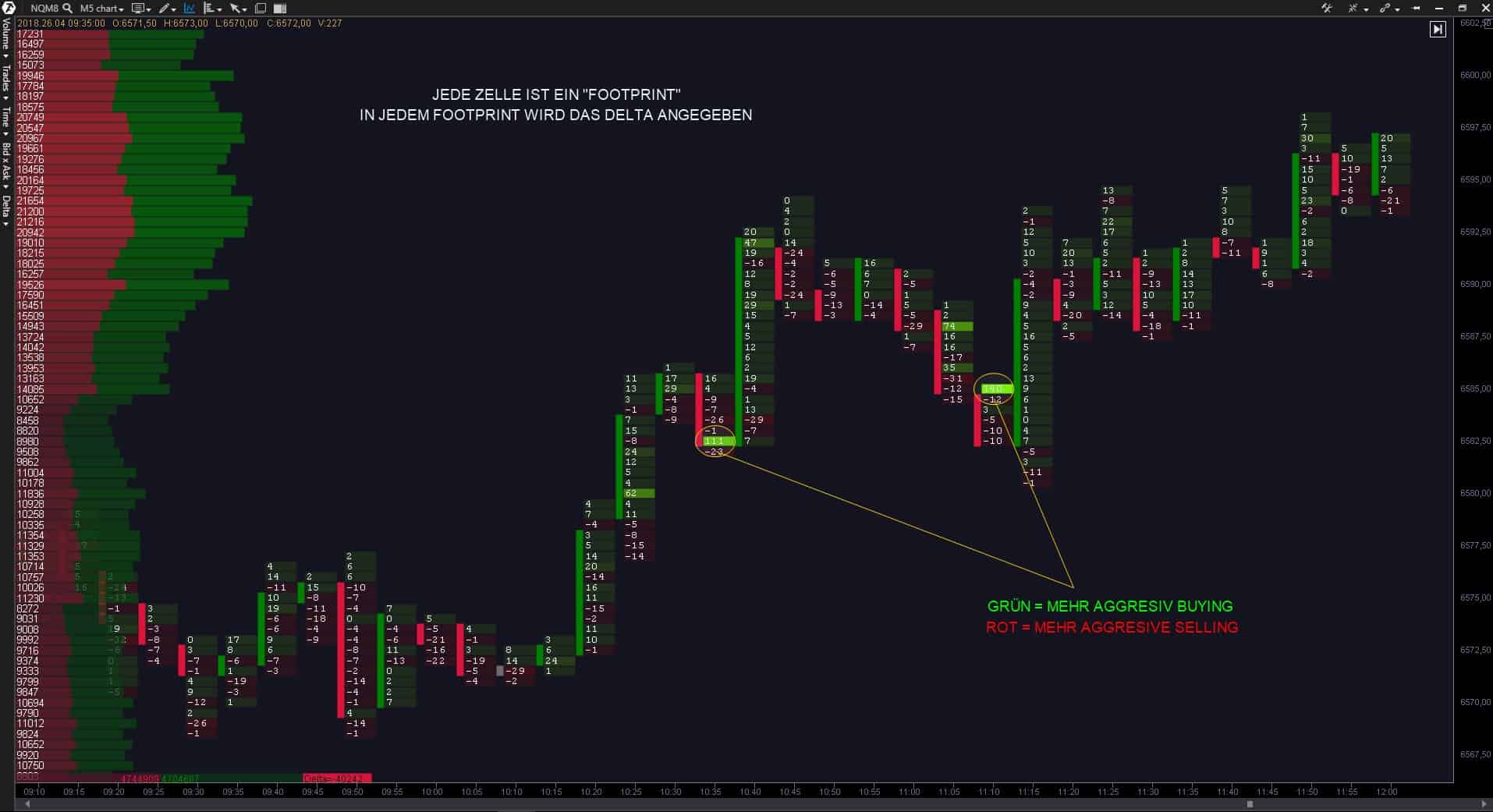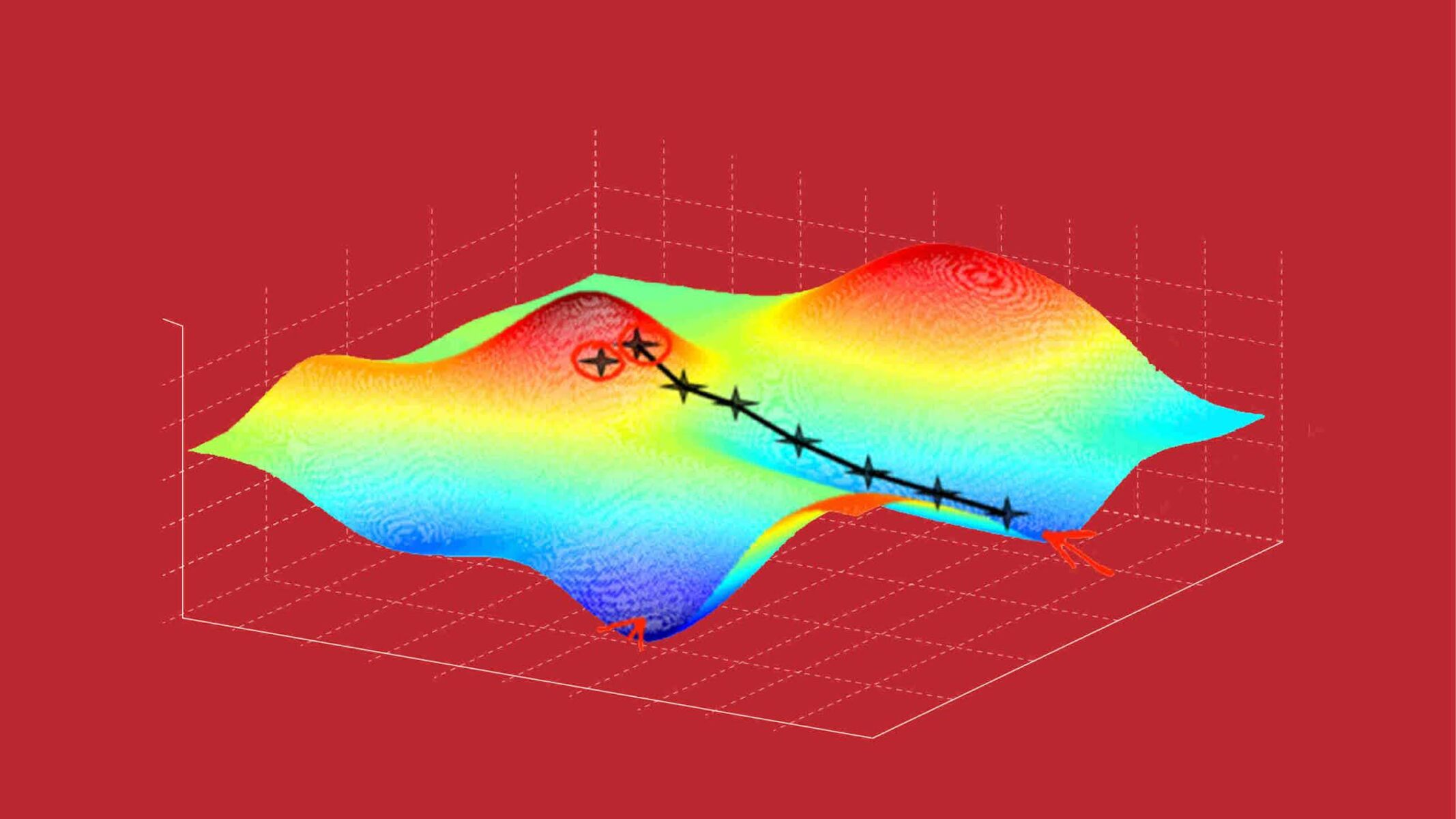Understanding Delta in Trading
When it comes to options trading, it’s crucial to have a solid understanding of various factors that can affect the value of your trades. One of the most important concepts to grasp is delta.
Delta measures the rate of change of an option’s price in relation to the price movement of the underlying asset. It quantifies the degree to which an option price will move in response to a $1 change in the price of the underlying asset.
Put simply, delta represents the sensitivity of an option’s value to changes in the underlying asset’s price. It ranges from 0 to 1 for call options and -1 to 0 for put options. A call option with a delta of 0.5 indicates that for every $1 increase in the underlying asset’s price, the option price will increase by $0.50.
The significance of delta lies in its role in option pricing. Delta, along with other factors such as volatility, interest rates, and time to expiration, is a critical component in determining the value of an option.
Delta values can vary between different options. In-the-money options typically have higher delta values, indicating a higher probability of the option expiring profitably. Out-of-the-money options, on the other hand, have lower delta values as the likelihood of them finishing in the money is lower.
Delta can also provide a measure of the probability of an option expiring in the money. For example, an option with a delta of 0.7 indicates a 70% chance that the option will be in-the-money at expiration. This probability estimation can be useful for traders in assessing the risk/reward profile of the options they are considering.
Understanding delta is crucial for implementing various option strategies. For example, traders looking to replicate the risk/reward profile of owning an underlying asset can use delta to calculate the number of options contracts needed to achieve a desired exposure. Additionally, delta can help traders manage their overall portfolio delta by adjusting their positions accordingly.
It’s important to note that delta is not a static value. It can change as the price of the underlying asset moves, time elapses, or market conditions shift. Factors such as time decay or changes in implied volatility can impact delta and therefore affect the option price.
To effectively use delta in trading, it’s crucial to keep track of the delta values of your options and monitor how they change over time. By understanding delta and its relationship with option pricing, traders can make more informed decisions and develop effective strategies to maximize their investment potential.
What is Delta?
Delta, in the context of options trading, is a crucial metric that measures the sensitivity of an option’s price to changes in the price of the underlying asset. It quantifies the rate at which the option’s value changes relative to a $1 change in the underlying asset’s price.
Delta values range from 0 to 1 for call options and -1 to 0 for put options. A call option with a delta of 0.5 indicates that for every $1 increase in the underlying asset’s price, the option price will increase by $0.50. On the flip side, a put option with a delta of -0.5 means that for every $1 decrease in the underlying asset’s price, the option price will increase by $0.50.
Delta plays a significant role in option pricing. It is one of the factors, along with implied volatility, time to expiration, and interest rates, that determine the value of an option contract. Investors and traders use delta to assess the potential risk and return of their options positions.
The delta value provides important insights into the probability of an option expiring in-the-money. In-the-money options, which have a delta value greater than 0.5 for calls or less than -0.5 for puts, have a higher likelihood of being profitable at expiration. Conversely, out-of-the-money options typically have delta values closer to zero, indicating a lower chance of ending up profitable.
Delta also serves as a measure of leverage. High delta values imply greater exposure to the price movements of the underlying asset, while low delta values mean less sensitivity to these movements. Traders can adjust their positions based on their desired level of risk and potential reward by utilizing different delta options.
It’s important to note that delta is not a fixed value. It can change as the price of the underlying asset fluctuates, time passes, or market conditions shift. Options closer to expiration tend to have higher delta values, while options with longer time to expiration have lower delta values.
Understanding delta is crucial for implementing various option strategies. For instance, delta hedging involves offsetting the risk of an option position by taking an opposing position in the underlying asset. By maintaining a delta-neutral position, traders can mitigate potential losses resulting from changes in the underlying asset’s price.
In summary, delta is a key metric in options trading that measures the sensitivity of an option’s price to changes in the price of the underlying asset. It plays a vital role in option pricing, probability estimation, and risk management. By understanding and utilizing delta effectively, traders can make informed decisions and optimize their options trading strategies.
The Importance of Delta in Options Trading
Delta is a crucial factor in options trading as it provides valuable insights into the relationship between an option’s price and the underlying asset’s price. Understanding delta can significantly enhance a trader’s ability to assess risk, estimate probability, and implement effective strategies.
One of the key reasons why delta is important in options trading is its role in option pricing. Delta, along with other factors such as volatility and time to expiration, contributes to the overall value of an option contract. By analyzing the delta value, traders can gain a better understanding of how changes in the underlying asset’s price will impact the price of the option.
Moreover, delta can be used as a measure of probability. A higher delta value indicates a greater likelihood of an option expiring in-the-money, while a lower delta value suggests a lower probability. This probability estimation can help traders assess the risk and reward potential of their options positions and make informed trading decisions.
Delta also plays a crucial role in options strategies. For example, traders can use delta to create a delta-neutral position by combining options and the underlying asset in a way that offsets the delta values. This strategy helps manage risk by minimizing the impact of price movements in the underlying asset, allowing traders to benefit from other factors such as time decay or changes in volatility.
Another advantage of delta is its ability to indicate the level of leverage within an options position. Options with higher delta values provide a higher exposure to the price movements of the underlying asset, making them potentially more profitable but also riskier. On the other hand, options with lower delta values offer less sensitivity to price changes but also limited potential gains.
Additionally, delta can be used to estimate the impact of time decay on options prices. As an option approaches its expiration date, delta may change, reflecting the diminishing time value. Traders can monitor the delta values of their options to assess the potential impact of time decay on their positions and make necessary adjustments to their strategies.
Ultimately, delta is a powerful tool for options traders, providing them with valuable insights into option pricing, probability estimation, risk management, and options strategies. By understanding and utilizing delta effectively, traders can make informed decisions, enhance their trading strategies, and improve their overall success in options trading.
Delta and Its Impact on Option Pricing
Delta plays a significant role in option pricing, as it measures the sensitivity of an option’s price to changes in the price of the underlying asset. Understanding how delta impacts option pricing is essential for options traders to assess the potential risks and rewards of their positions.
Delta values range from 0 to 1 for call options and -1 to 0 for put options. A call option with a delta of 0.5 indicates that for every $1 increase in the price of the underlying asset, the option price will increase by $0.50. On the other hand, a put option with a delta of -0.5 means that for every $1 decrease in the price of the underlying asset, the option price will increase by $0.50.
Essentially, the higher the delta value, the more the option price is influenced by changes in the underlying asset’s price. Options with high delta values, such as deep in-the-money options, closely track the movements of the underlying asset. In contrast, options with low delta values, such as far out-of-the-money options, are less sensitive to changes in the underlying asset’s price.
Delta’s impact on option pricing can be explained by the concept of hedge ratio. The delta value represents the hedge ratio, which quantifies the number of shares of the underlying asset that need to be bought or sold to offset the price movement in the option. This hedge ratio helps market participants manage their risk exposure in options positions.
Moreover, delta is a dynamic variable, which means it can change as the price of the underlying asset fluctuates, time passes, or market conditions shift. As the price of the underlying asset changes, the delta value adjusts accordingly, which in turn affects the price of the option. Options with shorter time to expiration may have delta values that approach 0 or 1 more rapidly than options with longer timeframes.
There is also a relationship between delta and implied volatility. As implied volatility increases, the sensitivity of the option price to changes in the underlying asset’s price also increases, resulting in higher delta values. Conversely, as implied volatility decreases, the sensitivity decreases, leading to lower delta values.
Understanding the impact of delta on option pricing is crucial because traders can use this knowledge to evaluate the risk and return potential of their options positions. By analyzing the delta values of different options, traders can assess the level of exposure they have to changes in the underlying asset’s price and make informed decisions about managing their risk and adjusting their strategies accordingly.
In summary, delta is a key factor in option pricing as it measures the sensitivity of option prices to changes in the price of the underlying asset. Delta values help traders assess the risk and return potential of their options positions and make informed decisions about managing their portfolios. By understanding delta’s impact on option pricing, traders can improve their ability to navigate the options market successfully.
Interpreting Delta Values
Interpreting delta values is essential for options traders as it provides important insights into the relationship between an option’s price and the price of the underlying asset. By understanding how to interpret delta values, traders can assess the potential profitability and risk associated with their options positions.
Delta values for call options range from 0 to 1, while for put options, they range from -1 to 0. A delta value of 0.5 for a call option indicates that for every $1 increase in the price of the underlying asset, the option price is expected to increase by $0.50. Similarly, a put option with a delta of -0.5 suggests that for every $1 decrease in the price of the underlying asset, the option price will increase by $0.50.
Interpreting delta values can provide insight into the probability of an option expiring in-the-money. In-the-money options typically have delta values greater than 0.5 for calls or less than -0.5 for puts. These options have a higher chance of being profitable at expiration. Out-of-the-money options, where the strike price is above the current price for calls or below it for puts, typically have lower delta values, indicating a lower probability of expiring profitably.
Delta values also reflect the sensitivity of the option’s price to changes in the underlying asset’s price. Higher delta values indicate a greater sensitivity, meaning that the option price will closely track the movements of the underlying asset. Options with high delta values, such as deep in-the-money options, closely mirror the price movements of the underlying asset, providing a higher exposure to its price fluctuations.
On the other hand, options with low delta values, such as far out-of-the-money options, have less sensitivity to changes in the underlying asset’s price. These options are less influenced by the price movements of the underlying asset and offer a lower exposure to potential gains or losses.
It’s important to note that delta values are not static and can change over time. Factors such as time to expiration and changes in market conditions can impact delta. As an option approaches expiration, its delta value may approach 1 for in-the-money options or 0 for out-of-the-money options. This is because the likelihood of the option finishing in-the-money becomes increasingly certain as expiration nears.
Additionally, delta values are affected by changes in implied volatility. Higher implied volatility tends to increase the sensitivity of option prices to changes in the underlying asset’s price, resulting in higher delta values. Conversely, lower implied volatility leads to lower sensitivity and lower delta values.
By interpreting delta values, options traders can gauge the potential profitability, probability of success, and risk exposure of their options positions. This understanding allows traders to make informed decisions about position sizing, risk management, and strategy selection. Delta serves as a valuable tool in analyzing options and developing strategies tailored to specific market conditions and risk preferences.
Delta as a Measure of Probability
Delta, a key metric in options trading, can also be interpreted as a measure of probability. By understanding how delta represents the likelihood of an option expiring in-the-money, traders can make more informed decisions about their options positions and assess the risk/reward profile of their trades.
The delta value of an option provides an estimate of the probability that the option will finish in-the-money at expiration. For example, an option with a delta of 0.7 suggests a 70% chance that the option will be profitable if held until expiration. Likewise, an option with a delta of 0.3 implies a 30% chance of expiring in-the-money.
This probability estimation is based on the premise that delta represents the hedge ratio or the number of shares of the underlying asset needed to hedge the option’s price movement. In other words, delta indicates the sensitivity of the option’s price to changes in the underlying asset’s price. The higher the delta, the greater the sensitivity and hence the higher the probability of the option being profitable at expiration.
Interpreting delta as a measure of probability allows traders to assess the risk/reward potential of their options positions. Options with higher delta values have a greater chance of expiring profitably, but they may also come with higher price tags and greater exposure to the underlying asset’s price movements. On the other hand, options with lower delta values may be cheaper but also have a lower probability of success.
Traders can tailor their strategies based on their risk preference and desired probability of success. For example, more risk-averse traders may prefer options with higher delta values, as they offer a higher probability of profiting at the expense of potentially paying a higher premium. Conversely, traders with a higher tolerance for risk may opt for options with lower delta values, which come at a lower cost but also have a lower probability of expiring profitably.
It is important to note that delta is not a fixed value and can change as the price of the underlying asset moves or as time passes. As an option approaches expiration, its delta value may increase if it is in-the-money (approaching 1) or decrease if it is out-of-the-money (approaching 0). This is because the probability of the option expiring profitably becomes more certain as expiration nears.
By considering delta as a measure of probability, options traders can assess the risk and reward potential of their positions more accurately. Delta provides a valuable tool for estimating the likelihood of an option expiring in-the-money, helping traders make more informed decisions about position sizing, risk management, and strategy selection.
Delta and Option Strategies
Delta plays a crucial role in determining the risk and profit potential of various option strategies. By understanding how delta affects option prices, traders can implement effective strategies to capitalize on price movements and manage their risk exposure.
One of the fundamental option strategies that utilize delta is delta hedging. Delta hedging involves offsetting the risk of an options position by taking an opposing position in the underlying asset. By maintaining a delta-neutral position, traders can minimize the impact of price changes in the underlying asset, allowing them to profit from other factors such as time decay or changes in volatility.
For example, if a trader holds a call option with a delta of 0.5, they would need to sell or short 0.5 shares of the underlying asset to neutralize the position’s delta. By doing so, the trader eliminates the potential gains or losses resulting from the underlying asset’s price movements and relies solely on other factors that impact the options price.
Delta can also be used to replicate the risk/reward profile of owning the underlying asset through options strategies. By calculating the delta of a combination of options, traders can determine the number of options contracts necessary to achieve a desired exposure similar to owning the underlying asset. This strategy allows traders to potentially achieve similar profits to owning the underlying asset while leveraging the advantages of options, such as lower capital requirements.
Moreover, delta plays a crucial role in option spread strategies. For example, constructing a vertical spread involves buying and selling options with different strike prices but the same expiration date. By selecting options with different delta values, traders can create spreads that generate a desired risk/reward profile. A bullish trader might choose a vertical call spread, buying a call option with a higher delta and selling a call option with a lower delta. This allows them to potentially profit from a moderate increase in the underlying asset’s price while limiting their risk exposure.
On the other hand, traders employing delta-gamma hedging may adjust their positions to maintain a desired level of delta exposure as the price of the underlying asset changes. This strategy involves continuously monitoring the delta values of options, rebalancing the position by buying or selling additional options to maintain a delta-neutral or other targeted delta position.
Delta is also useful for assessing the overall risk exposure of an options portfolio. By summing up the individual delta values of all options held in the portfolio, traders can determine the portfolio’s overall delta. This information allows them to manage their portfolio’s sensitivity to price movements in the underlying asset and make necessary adjustments to maintain a desired level of risk.
In summary, delta is a critical component in various option strategies, offering traders the ability to hedge risk, replicate the risk/reward profile of the underlying asset, construct spreads, and actively manage portfolio exposure. By utilizing delta effectively, traders can implement strategies that align with their market outlook, risk tolerance, and investment goals.
Factors Affecting Delta
Several factors influence the delta value of an option, impacting its sensitivity to changes in the underlying asset’s price. Understanding these factors is crucial for options traders as it enables them to assess the potential risk and profit potential of their options positions accurately.
1. Moneyness: The moneyness of an option refers to its relationship to the current price of the underlying asset. In-the-money options, where the strike price is below the current price for calls or above it for puts, tend to have a delta close to 1. Out-of-the-money options, where the strike price is above the current price for calls or below it for puts, have lower delta values closer to 0.
2. Time to Expiration: Time decay, also known as theta, affects the delta value of an option. As an option approaches expiration, its delta value may change. In-the-money options have delta values that approach 1, and out-of-the-money options have delta values that approach 0, as expiration nears. Time decay causes the delta of an option to change as the likelihood of it expiring in-the-money becomes more certain.
3. Volatility: Implied volatility, which measures the market’s expectations for future price fluctuations, has an impact on the delta value of an option. Higher implied volatility often leads to higher delta values as options become more sensitive to changes in the underlying asset’s price. Conversely, lower implied volatility tends to result in lower delta values.
4. Interest Rates: Changes in interest rates can affect the delta value of options, particularly those with longer time to expiration. An increase in interest rates may lead to an increase in call option deltas and a decrease in put option deltas. Conversely, a decrease in interest rates can have the opposite effect.
5. Underlying Asset Price: Delta directly measures the sensitivity of an option’s price to changes in the underlying asset’s price. As the price of the underlying asset changes, the delta of the associated options can fluctuate. For call options, delta values increase as the underlying asset’s price rises, while for put options, delta values increase as the underlying asset’s price falls.
6. Dividends: Dividends can potentially impact the delta of options on dividend-paying stocks. A dividend payout can result in a decrease in the price of the underlying stock and, consequently, a decrease in the delta of call options and an increase in the delta of put options.
Understanding these factors and their influence on delta values allows options traders to make informed decisions about position sizing, strategy selection, and risk management. Traders must assess the potential impact of these factors on their options positions and adjust their strategies accordingly to optimize their trading approach.
How to Use Delta in Trading
Delta, being a critical metric in options trading, provides traders with valuable insights into the relationship between an option’s price and the price of the underlying asset. Here are some ways to effectively utilize delta in trading:
1. Assess Risk and Reward: Delta serves as a useful tool in evaluating the risk and reward potential of options positions. Higher delta values indicate a greater chance of an option expiring in-the-money, offering a higher probability of profit but also higher risk. Traders can use delta to gauge the potential risk exposure and adjust their positions accordingly.
2. Create Delta-Neutral Positions: Traders can construct delta-neutral positions to minimize the impact of price movements in the underlying asset. By combining options and the underlying asset in a way that offsets the delta values, traders can achieve a delta-neutral portfolio. This strategy allows traders to profit from other factors such as time decay or changes in volatility while minimizing directional risk.
3. Manage Portfolio Delta: Monitoring the overall delta of an options portfolio is essential for managing risk exposure. By summing up the individual delta values of all options held in the portfolio, traders can assess the portfolio’s sensitivity to changes in the underlying asset’s price. This information helps traders make necessary adjustments to maintain a desired level of risk and exposure.
4. Implement Options Strategies: Understanding delta allows traders to implement various options strategies effectively. For example, traders seeking to replicate the risk/reward profile of owning the underlying asset can use delta to calculate the number of options contracts needed to achieve the desired exposure. Delta can also guide the selection of options spreads, enabling traders to construct strategies that align with their market outlook and risk tolerance.
5. Adjust Positions as Conditions Change: As delta values can change due to the price movements of the underlying asset or shifts in market conditions, it is crucial to monitor and adjust options positions accordingly. Traders should closely track the delta values of their options to ensure their positions align with their intended risk/reward profiles as market conditions evolve over time.
6. Combine Delta with Other Metrics: Delta is a powerful metric, but it is not the only factor to consider in options trading. By combining delta with other metrics, such as implied volatility, theta, and gamma, traders can gain a more comprehensive understanding of their options positions. Incorporating multiple metrics provides a more nuanced view and helps traders make well-informed decisions.
It is important to note that while delta is a valuable tool, it is not without limitations. Delta assumes other factors remain constant, but in reality, options pricing involves multiple variables that can impact the value of the position. Traders should consider delta in conjunction with additional research and analysis to make informed trading decisions.
By effectively utilizing delta in trading, options traders can enhance their decision-making process, optimize risk management, and improve the overall success of their options trading strategies.
Conclusion
Delta, as a crucial metric in options trading, provides valuable insights into the relationship between an option’s price and the price of the underlying asset. By understanding and effectively utilizing delta, traders can make more informed decisions, manage risk exposure, and optimize their trading strategies to achieve their investment goals.
Through interpreting delta values, traders can assess the probability of an option expiring in-the-money and estimate the potential profitability of their options positions. Delta serves as a measure of the sensitivity of an option’s price to changes in the underlying asset’s price, allowing traders to assess risk and reward potential accurately.
Furthermore, delta plays a crucial role in various aspects of options trading. It influences option pricing, enabling traders to understand how changes in the underlying asset’s price impact the option’s value. Delta is used to create delta-neutral positions, replicating the risk/reward profile of owning the underlying asset while minimizing directional risk. Additionally, delta is employed in options strategies such as spreads and delta hedging to manage risk exposure and optimize trading outcomes.
Traders must consider the factors that affect delta, including moneyness, time to expiration, volatility, interest rates, and the underlying asset price. Understanding these factors allows traders to assess the potential impact on delta values and make necessary adjustments to their options positions accordingly.
In conclusion, delta plays a significant role in options trading and provides traders with valuable insights into option pricing, risk assessment, and strategy implementation. By effectively utilizing and interpreting delta, traders can enhance their decision-making process, manage risk exposure, and optimize their options trading strategies for greater success in the dynamic and ever-changing options market.

























